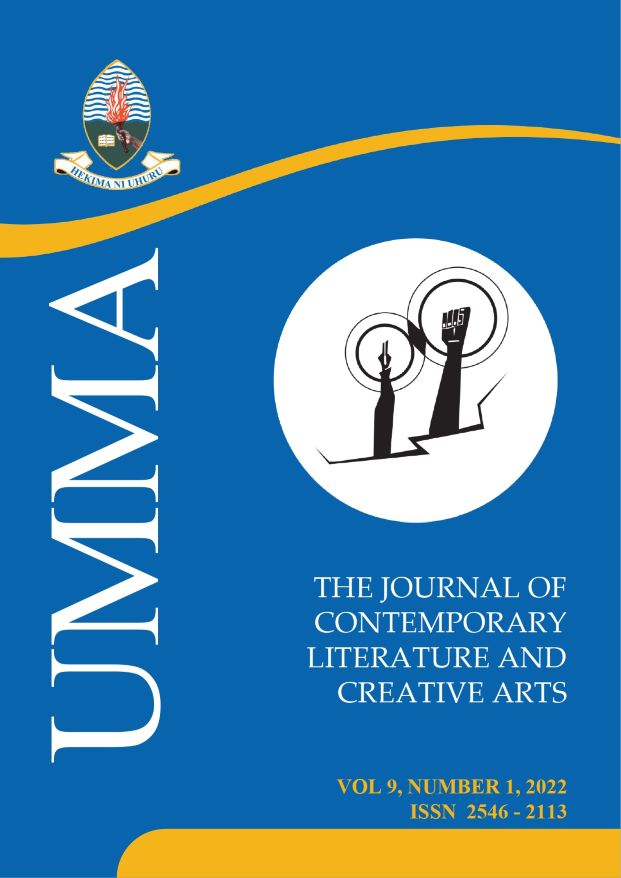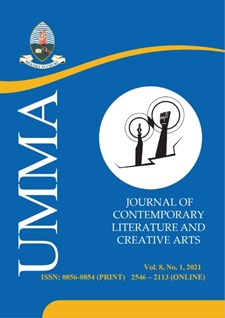' Maasainess ' and Whiteness: The Ruins of Colonial ' Penetration ' in Hoffman ' s The White Maasai and Budgor ' s the Warrior Princess
Abstract
Abstract This paper looks at ' Maasainess ' and Whiteness as binaries in constant engagement aimed to question how Whiteness is re-inscribed in Maasainess in the autobiographical genre. It explores the image of the Maasai often figured as a male warrior, a residue from the colonial intrusion into the East African region during the nineteenth century. To trace the various embodiments of this male figure and how it enhances the intersections between Maasainess and Whiteness, I focus on two autobiographies by Euro-American women: Corine Hoffman ' s The White Maasai and Budgor ' s The Warrior Princess: Becoming the First Female Maasai Warrior. Drawing from Mary Louise Pratt ' s idea of the contact zones and Renato Rosaldo ' s imperial nostalgia, the paper reads Maasainess and Whiteness as sites of cultural encounters, even contested encounters. Both Hofmann and Budgor appropriate the Maasai male warrior by way of nostalgia as a trope and double cultural signifier to embody and reflect white privilege as well as freeze the image of Africa to its colonial past. It argues that the autobiography as a tool for self-expression is employed to extend the colonial agenda to appropriate cultural spaces and entities to further perpetuate the differences between Maasainess and Whiteness as cultural markers. However, the two autobiographies read here as medium of selfexpression defy such cultural appropriations through their constant engagement with Whiteness and Maasainess as categories of difference, highlighting the fault lines in the cultural appropriation of Maasainess by Whiteness.
Keywords: Maasainess, Whiteness, Cultural Signifier, Cultural appropriation https://dx.doi.org/10.56279/ummaj.v9i1.2
References
Abdelrahim, S. 2015. ' Review of warrior princess, Voicesforbiodiversity.org, Accessed, March 11, 2018. www.voicesforbiodiversity.org.
Achebe, C. 1989, Hopes and impediments: selected Essays, Doubleday, New York, NY.
Hall, M. C. and Tucker, H. (eds) 2004, Tourism and postcolonialism: contested discourses, identities, and representations. Routledge, New York, NY, pp. 140-152.
Blixen, K. 1982, Out of Africa, Penguin, Harmondsworth.
Budgor, M. 2013, Warrior Princess: My Quest to Become the First Female Maasai Warrior, Globe Pequot Press, Connecticut, CT.
Budgor, M. 2013, Warrior Princess: My Quest to Become the First Female Maasai Warrior, Allen & Unwin, London.
Gurminder, K B. 2014, Postcolonial and decolonial dialogues, Postcolonial Studies, vol. 17, no. 2, pp. 115-121.
Higham, N. and Budgor, M. 2013, Meet the author. BBC NEWS.
www.youtube.com. Accessed, 07 April, 2018.
Hodgson, D. L. 1999, ' Once intrepid warriors ' : modernity and the
production of Maasai masculinities, Ethnology, vol. 38, no. 2, pp. 121-150.
Hofmann, C. 2005. The White Maasai: my exotic tale of love and adventure, Arcadia, London.
Hollinshead, K. 1999, Tourism as public culture: Horne's ideological
commentary on the Legerdemain of tourism, International Journal of Tourism Research, vol. 1, no. 4, pp. 267-292.
Huggan, G. 2001, The postcolonial exotic: marketing the margins. Routledge, London.
Huxley, E. 1959, The Flame Trees of Thika: Memories of an African Childhood, Chatto & Windus, London.
Ippmedia.com. 2015, How European Car Makers Make Billions Out of
Maasai Brand Rights." m.ippmedia.com/en/business. Accessed, 20 May, 2018.
Markham, B. 1983, West with the night, North Point, San Francisco, CA.
Nwankwo, C. 2005, ' Parallax sightlines: Alice Walker ' s sisterhood and the key to dreams, in Nnaemeka, Obioma (ed), Female circumcision and the politics of knowledge: African women in imperialist discourses, Praeger, Westport, Conn. CT.
Pratt, M.L. 1992, Imperial eyes: travel writing and transculturation, Routledge, London.
Rosaldo, R. 1989, Imperialist nostalgia, Representations, vol. 26 no.1, pp. 107-122.
Salazar, N. B. 2009, Imaged or imagined: ' Tourismification ' of peoples and places, Cahiers d ' Études Africaines, vol. xlix, pp. 49-71.
Simpson, A. 1937, The land that never was, Selwyn & Blount, London.
Stoler, A. L. 2002, Carnal knowledge, and imperial power: race and the intimate in colonial rule, University of California Press, Berkeley, CA.
Walker, A. 1993, Warrior marks: female genital mutilation and the sexual blinding of women, Harcourt Brace, Orlando, Florida FL.
Whitlock, G. 2000, The intimate empire: reading women's autobiography, Cassell, London.
Downloads
Published
Issue
Section
License
- Authors retain copyright and grant the journal right of first publication with the work simultaneously licensed under a Creative Commons Attribution License that allows others to share the work with an acknowledgement of the work's authorship and initial publication in this journal.
- Authors are able to enter into separate, additional contractual arrangements for the non-exclusive distribution of the journal's published version of the work (e.g., post it to an institutional repository or publish it in a book), with an acknowledgement of its initial publication in this journal.
- Authors are permitted and encouraged to post their work online (e.g., in institutional repositories or on their website) prior to and during the submission process, as it can lead to productive exchanges, as well as earlier and greater citation of published work (See The Effect of Open Access).



